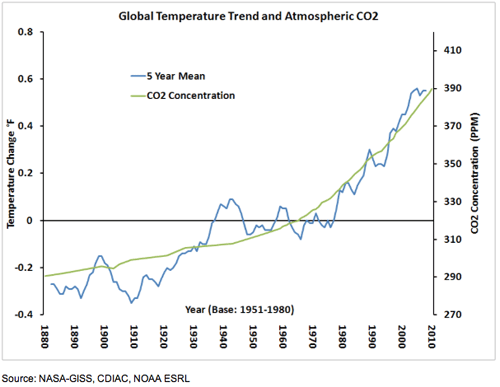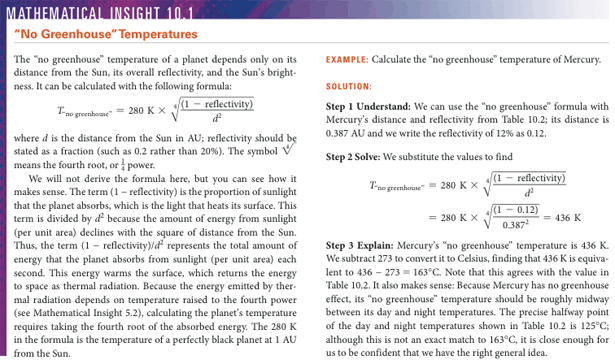Originally posted at Earth Protect.
“Human history becomes more and more a race between education and catastrophe.” — H.G. Wells, The Outline of History, 1920
There may be no better illustration of the sentiment in the H.G. Wells quotation than that which we find in the issue of climate change, aka global warming. The evidence for global warming is overwhelming and incontrovertible, its consequences are already being felt in wildfires, extreme weather events, and ocean acidification, and its future consequences could be far worse for our children and grandchildren. These facts make it critical that we teach school children about the issue, but there is a lot of debate about how best to do that. As a scientist, educator, and author of a popular children’s book that focuses on this topic (The Wizard Who Saved the World), I’ll offer a few hints that guide my own presentations to children:
Hint 1: Maintain a three-pronged focus on education, perspective, and inspiration. We usually think of the goal of science education as getting students to understand science, but I believe that success in this goal can be achieved only if we simultaneously link the science content to the way that it can change our perspective (on ourselves or our planet) and inspire us to make the world a better place. We should therefore focus on “education, perspective, and inspiration” in all science teaching, but here I’ll give the specific example of how this idea applies to teaching about global warming:
- Education. The education piece is the science content. The specific content will vary with grade level, but the general focus should be on the idea that global warming is an easily understood scientific idea, backed by strong evidence that anyone can investigate for themselves.
- Perspective. The science of global warming can shift our perspective in many ways, but perhaps the most significant is in the way it changes our perspective on our relationship with our planet. The present generation is the first generation in the history of the human race that has ever had the ability to cause large-scale changes to the global environment. This means that while past generations could in some sense think of themselves as being at the mercy of “mother nature,” we now control our own climate destiny. The choices we make today will determine the type of environment in which our descendants will live for centuries or millennia to come.
- Inspiration. Global warming is scary, and if you teach only the facts and the perspective shift above, you may leave children and youth feeling overwhelmed and worried. It’s therefore imperative to find a way to use the study of global warming for inspiration, and in fact this is quite easy to do: The problem of global warming is eminently solvable, and many of the potential solutions could mean new ideas and technologies that would give us the kind of future that children like to dream about. In other words, use the topic of global warming to guide children to thinking about what they can do to make the future that they wish to live in. As you’ll see at the end of The Wizard Who Saved the World (illustration below), we want kids to leave any school discussion of global warming with the belief that they, too, can be one of the “wizards.”

Hint 2: Teach across disciplines. Global warming is based in science, but it literally affects everything. Therefore, it should be taught across the curriculum in appropriate contexts. For example, the graphs and data of global warming can be presented and discussed in math; the impacts of global warming can be discussed in social science; and the policy issues of global warming can be discussed in terms of government and politics. The inspiration piece above can be used to spur thought about future career options, which can be turned into such things as art or music activities for younger children and career discussions for middle and high school kids. If you are a teacher, use your creativity to find ways to integrate teaching about global warming into all of your subjects.
Hint 3: Keep the scientific focus on “how we know.” The way that science is generally presented in school has been rightfully criticized as being too focused on facts and memorization and insufficiently focused on helping students understand how we arrive at scientific knowledge. While this is a problem that should be addressed for all science teaching, it is particularly acute for the science of global warming, because of all the misinformation spread by the so-called skeptics. If we simply teach the facts about global warming, then it’s just our words against theirs. But if we show how we know what we know, then people can see for themselves that the scientific case is unassailable. In particular, no matter how deeply you go into the math and science of global warming, you should always remind your audience that the basic scientific case starts with two simple facts that lead directly to one simple conclusion:
Fact 1: Carbon dioxide (and other “greenhouse gases”) trap heat and make Earth warmer than it would be otherwise. This fact is established both by laboratory measurements of the heat-trapping properties of these gases and by confirming that this effect is necessary to explain the actual temperatures of the planets (see details in the Appendix at end of the post).
Fact 2: Human activity such as the burning of fossil fuels (coal, oil, gas) is rapidly increasing the amount of carbon dioxide in Earth’s atmosphere. This fact is directly observed through measurements of the atmospheric content of carbon dioxide.
Inevitable Conclusion: We should expect the rising carbon dioxide concentration to warm our planet, with the warming becoming more severe as we add more carbon dioxide. This expectation is borne out by evidence, such as that shown in the graph below and in this remarkable video showing global temperature changes over the past 130 years.

Graph reprinted from http://www.c2es.org/facts-figures/trends/co2-temp.
Once students understand this basic case and the evidence behind it, the rest is essentially details, albeit important ones such as the way we can use past geological data and climate models to try to predict how much and how fast the climate will change.
Hint 4: Adapt to grade and course level. My final hint concerns the fact that this topic is so important that we should be revisiting it with students every year, with increasing levels of sophistication as students get older. A few broad suggestions by grade level:
- Grades K-2: At this age, we cannot expect kids to understand the scientific arguments, so instead we should focus on things like “what you can do to help.” In other words, build awareness of the issue of global warming and how it may affect us, but focus on the “inspiration” side of getting kids to think about how this societal problem can translate to opportunities for their own future.
- Grades 3-5: Children in this age group are beginning to build critical thinking capabilities, so this is the ideal time to introduce the basic scientific argument above, supplemented by beginning to show them data that also teach them about how to read graphs and evaluate evidence.
- Grades 6-8: Students in middle school can begin to address different aspects of global warming in different classes. For example, social science classes should include discussion of the sociological and international effects, as well as of implications to policy discussions. Science classes (and also math to a lesser extent) can begin to look at the evidence in greater depth, particularly with regard to understanding how evidence is collected and studied and how climate modeling works and is tested. This is also a great age to begin introducing some of the outstanding videos that deal with the topic. Two of my recent favorites are the National Academies of Science videos called “Climate Change: Lines of Evidence” and the 2012 film “Chasing Ice.”
- High school: By high school, students should be able to investigate the science of global warming in much more detail, becoming familiar with such things as the principles of mathematical modeling in general and climate modeling in particular (see example in the Appendix at end of this post), of investigating the various climate effects predicted by models, and in being able to conduct independent research both into the real science and into the issues that undermine the skeptic claims. Note that for the latter, it is especially worth pointing students to the outstanding web site www.skepticalscience.com, which includes a long list of skeptic claims and what is wrong with them.
- Parents: Even if you’re not a teacher, you may still be dealing with children as a parent or in other capacities. This means that you, too, have an opportunity to help children understand the various issues associated with global warming. As a parent, you can use the grade level hints above at home, and resources like those I’ve given elsewhere in this article can help inform you if you need additional information.
In closing, please keep in mind that the above set of hints is a very short list based on my personal views about teaching. I hope it will be of use to some of you, but be sure to consult other sources as well as you go out to teach children about climate science and global warming.
Appendix: Modeling Planetary Temperatures
One of the simplest ways to demonstrate the fact that carbon dioxide really is a major factor in planetary temperatures is to show students how we model the temperatures of the rocky planets of our solar system. It turns out to be remarkably easy (at least for students with high school level math) to calculate the “no greenhouse” temperature of a planet, meaning the temperature that we expect for the planet in the absence of greenhouse warming by carbon dioxide and other greenhouse gases. Below, I’ve pasted two excerpts from my college astronomy textbook:
- A box explaining the calculation of “no greenhouse” temperatures.
- A table showing the “no greenhouse” temperatures compare to actual temperatures.
The bottom line is very simple: The “no greenhouse” temperatures agree with the actual temperatures only for worlds without greenhouse gases, which means that other worlds are indeed being made warmer by these gases. Notice in particular that Earth is 31°C (about 56°F) warmer than its “no greenhouse” temperature, which means our planet would be frozen over without the greenhouse effect, while Venus presents the far more extreme case of 510°C (about 920°F) of greenhouse warming. That’s why I like to say that while the greenhouse effect is a very good thing for life on Earth, Venus is proof that it’s possible to have too much of a good thing.
Both excerpts below are from The Cosmic Perspective, 7th edition, by Bennett, Donahue, Schneider, and Voit (Pearson Education, 2014)

